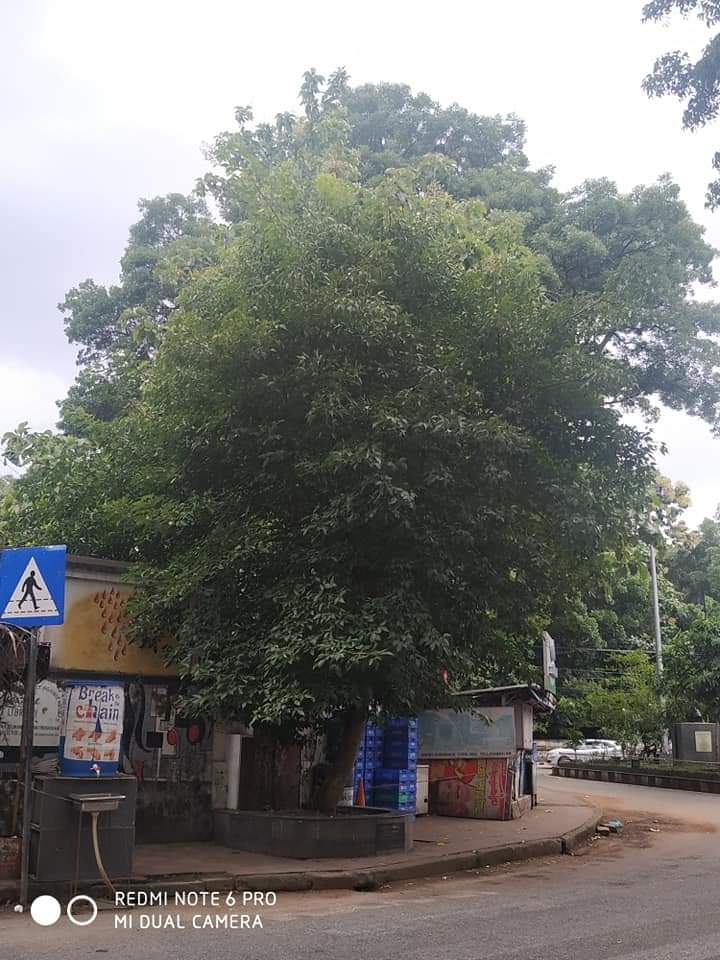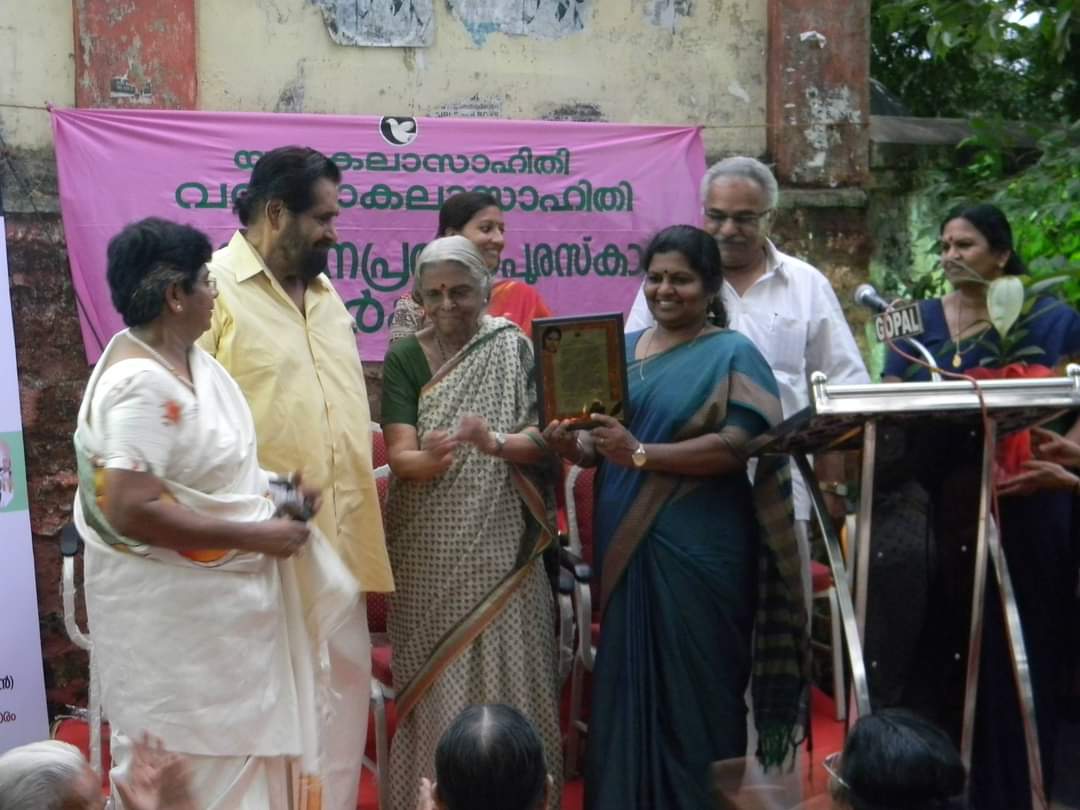This article is sourced from the social media posts of R. Rajagopal, Editor-at-large of The Telegraph Daily
Thiruvananthapuram is a great capital now, easy to commute, bristling with numerous places to eat and walk, and the sea is never too far. It was not always so; when I was a kid, public transport was horrible and it was a petty town where orthodoxy was entrenched. Public transport has vastly improved now. As for the orthodoxy, we will get a clue after the Lok Sabha elections. Among the handful of fond memories I have of my hometown was a mango tree outside my ancestral home where I went to spend a summer break when I was aged six or seven. I found one excuse or the other so that I managed to stay there for 15 years, until I left for Delhi. I spent those 15 formative years in an unwieldy home — the result of territorial expansion each time a child was born to my grandparents — with my grandmother. The house was too big for two occupants although a cousin and my uncle would stay with us once in a while. The vacuum was filled by a huge mango tree that towered over the house as if it was a guardian angel. The tree with its armotic and fleshy fruit, called Kottukonam which is a corruption of the original name Kotturkonam (a place), is usually found only at the southern tip of Kerala and not northwards of Kollam.

Our ancestral house is named Kurakkottukonam, probably because the most striking feature on the premises was that giant of a tree. The tree became my constant companion; I learnt to climb, fall, climb again, balance myself on its sandpaper-like branches and doze off after a few bruising tumbles and had my first smoke at the pinnacle from a swaying branch so that my grandmother could not see me. It was on that tree that I first read an English book in full (Guns of Navarone). When I was not on the tree, it was never far from me because I could see it from my bed — so much so that at night, I could almost tell the time by seeing how visible the tree was.
While I was in Calcutta, that tree and our ancestral home fell prey to the vagaries of disuse, both imploding, so to speak, because of the rot within. This long preamble must make it clear what that tree meant for me. I always thought that no one could claim more proximity to a tree than I did — an audacious assumption in a state where the Mangosteen tree and the Palmyra Palm are forever and inextricably associated with some of the greatest writers. So, it was with barely concealed hubris, if not contemptuous indifference, that I opened a YouTube link that I received as a forward. The video appeared to be about a tree. Yawn! But I felt a pit forming in my gut, transforming itself into a knot in the throat as I watched the video. I hope you will also watch the video attached below. It is only 8 minutes. Even if you don’t understand Malayalam, you must watch it. The scenes are worth it.

Since most of my friends do not understand Malayalam, I will try to give the gist in a few sentences, which is a lie because I already know I will get carried away. The video is anchored by K.A Beena, author and journalist and the friend of some of the Malayalis I respect and admire the most. Beena tells the tale of a Neermathalam tree (tree-leaved caper or garlic pear tree but the English words do not capture the fragrance and elegance of the Malayalam word, Neermathalam). Neermathalam marks an unforgettable moment in Malayalam literature because of a book (When the Neermathalam Bloomed) written by Madhavikutty, undoubtedly the most gifted writer in English in India. With lyrical finesse, Madhavikutty describes what the Neermathalam made her feel. I am reckless but not reckless enough to translate Madhavikutty. You will have to hunt for a translation. What made me choke and remember my mango tree was the stunning story Beena recounts in the video.

A decade ago, on May 31, 2013, Beena and her friends, especially Geetha Nazeer, planted a Neermathalam sapling along a road near my school. That road is now called Manaveeyam Boulevard – an extraordinary space, a cultural corridor where people can meet 24×7, converse, make music or simply be there doing nothing, which is what I do most of these days. When I was a kid, we did not have such a space, the closest was the public library but you can’t speak in a library. Beena and friends planted the sapling, gifted by then forest minister and current CPI state secretary Binoy Viswam, as a tribute, a memorial, to Madhavikutty. You can see the tiny sapling in the video.

Poet and gentle healer Sugathakumari gave the sapling to Koothattukulam Mary, a true revolutionary who got the prefix not from her birthplace but from the location of the police station in which she was subjected to unspeakable torture. CPI leader Binoy Viswam later married her daughter. Beena and friends used to bring water from their houses for the plant and, just as a newborn is nurtured and raised, numerous mothers brought up the tree, celebrating its birthdays and holding meaningful events under its shade. Eventually and unexpectedly, an agriculture officer, Jayadas, entered the picture and since then, the tree received scientific help to grow. Then on April 18, 2018, the Neermathalam tree bloomed for the first time.

Since then, all blooming seasons, which herald the summer, have been celebrations for the group. The tree has hosted book releases, wedding receptions, birthdays and a dance recital by Mallika Sarabhai. You can spot in the video actor Madhu, who debuted in Saat Hindustani in 1969 and is now a living tribute to Malayalam cinema. But the Neermathalam did not offer a mere stage under its shade. It also rewrote the meaning “space” in regressive and bureaucratic Trivandrum.

Hangouts had the undeclared stink of a male preserve, and women were not expected to meet in public after sundown, even to have a cup of tea. The Neermathalam changed all that as women from many places gathered under its shade to hang out and exchange ideas in the evening. The tree is undoubtedly a gift for the next generation.

An organic memorial that brings together people across genders, offers them space to write, read and draw, discuss, dissect and debate and challenges notions on why women cannot spend time outside their houses. If you visit Trivandrum, you cannot leave without seeing the tree. A decade on, Beena and friends have fulfilled their dream.
You have to have lived in Trivandrum, a city I hated once because of its orthodoxy and pettiness but have fallen in love with now, to understand the enormity of the selfless mission they have accomplished. There is another reason the video touched me like few have in recent memory. A coincidence. The clip features several faces that are unforgettable and that mark my generation. Geetha Nazeer is Geetachechi (didi) for me – a journalist who did not choose any easy option but spent 50 years in public life before contesting the local body elections and winning. Geethachechi’s father N.E Balaram was a true communist sage, who would make Vajpayee call for silence when he rose to speak in the House. Indian politics misses Balaram Sir the most now. Had he been around, he would have silenced the saffron thugs and their best-selling apologists with his erudition and deep knowledge of the Hindu scriptures.
Geethachechi’s brother Joy continues to keep my spirits up by sending me solid material to read and listen to — a welcome diversion from the pettiness and smallness that seem to have afflicted the local media. Viswam, Beena and Geethachechi represent a generation that prided itself on growing up on a strong diet of politics. Kanakalatha, the sister of my brother’s friend Giri, was also part of the gang. She had gone to East Germany as part of a youth programme and had written a delightful book (I think it was called From Trivandrum to Berlin and from Berlin to Trivandrum) that I read when I was in school.
I could also spot the late CPI leader Kaanam Rajendran, journalists BRP Bhaskar and Venkitesh Ramakrishnan (a friend and former colleague), writer Parvathy (who happens to be the sister of my friend and former colleague M.G. Radhakrishnan) and Radhika, the author who was my childhood fellow-traveller on the bus to school. Radhika married another fellow-traveller, a fiercely and deceptively serious-looking PK Rajasekharan, the literary encyclopedia who, I now realise, is the most jovial raconteur I have ever heard. I must have missed many other faces but not that of Vimala Menon, who was kind enough to treat me as a son along with Shyam and Yamuna.

All these years, I did not know about the Neermathalam tree. Journalism and its attendant problems ensured that the timing of my trips to Trivandrum was decided by the passing of some kind person or the other who had influenced me. Otherwise, visiting that tree with Shyam’s mother and him and his sister would have been a memory to cherish. The moral of the story, I suppose, is that what we really treasure are organic. They grow back in some form or the other and bloom to make our lives fragrant. Please do watch the video.

R. Rajagopal, Editor-at-large, The Telegraph.








